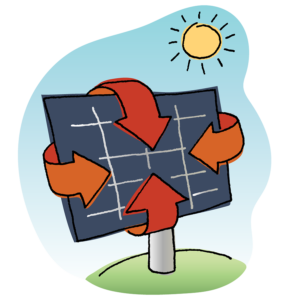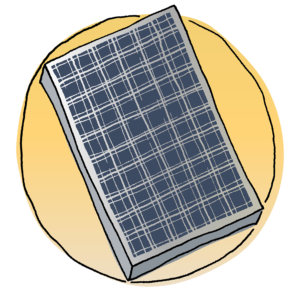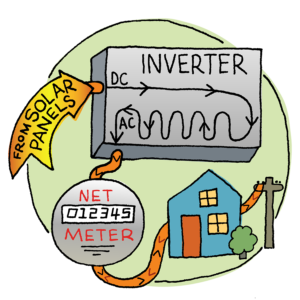Solar Facts
DISCOVER MORE ABOUT SOLAR

Dual Axis
Want your system to be around 40% more efficient? Then opt for a dual axis solar system.
There are several ways an installation can be designed. There are two fixed types: roof mount and ground mount. The roof mount systems are necessarily fixed in both axes, which means they neither tilt nor swing. A ground mounted system can be fixed like a roof-mounted one, or it can tilt or swing. A single axis solar tracking system usually swings east to west or on the sun’s Azimuth.
The bonus of a dual axis solar tracking system is it both tilts and swings, keeping the sun continually perpendicular to the solar panels. This enables it to generate the most energy, making it typically about 40% more efficient than a fixed system depending upon where it is geographically located.

Photovoltaic Panels
A solar photovoltaic panel (Solar PV) is an electrical device that changes the sun’s energy to usable DC (direct current) electricity, which is then converted to AC (alternating current) so it can be distributed through the grid and used in a home or business. Solar PV panels are about 3.5’ wide by 5-6’ tall, made of silicon wafers and thin wires sandwiched between glass and a polyester backing sheet, and held together with an aluminum frame. They weigh about 40-50 pounds each and can withstand the rigors of harsh weather.

Net Metering
The Challenge: solar generation only works when the sun is shining. What happens during nighttime, cloudy days and winter?
The Solution: Net Metering.
Throughout the year, sunshine strength varies. In the northeastern US region, for example, the sun shines brightly enough to generate the bulk of electricity (about 80%) during the period between May and September. The other 7 months yield about 20% of the total for the year. Under Vermont’s net metering rules utilities keep track of the amount of generated electricity, in addition to the consumed electricity, in a “Net Meter Bank” on the electric bill. During the bright summer days, the net meter bank fills up and during nights and winter days, the net meter bank empties as you use electricity. This cycles indefinitely.
Net Metering also provides the ability to share electricity from one place to another. Depending on how the system is set up, generated energy can go first to your house for all its needs, then excess can be directed to another house by allocating to its meter on the electric bill. Alternatively, the generated energy goes first to the grid, then can be allocated to one or more other meters.

Why Renewable Now?
Back in the 1980s scientists noted an alarming climb in atmospheric and oceanic warming across our entire planet. Further scientific research has identified that humans are a significant cause of this trend—dubbed Global Warming or Climate Change—because of the recent increase of vast amounts of carbon into our ecosphere. Solutions for combatting this climate crisis primarily point toward renewable energy as a replacement for fossil fuels in various sectors. Solar, Wind, and Hydro are the most available and efficient energy solutions we currently have. We’re running out of the time necessary to be able to reverse the warming trend, however, and we are calling for all hands on deck.
Furthermore, special interest groups are intent on maintaining the profit-centric expansion of fossil fuels. They see renewable energy as a competitor. Many of these special interest groups have lobbied lawmakers and energy regulators to slow or reverse the adoption of renewable energy by eroding or eliminating the favorable laws and incentives that renewable energy proponents only recently helped to write. Engagement with local legislators is necessary to reverse this trend. AllEarth is heavily involved in this, and would love to have you join us.
If you are considering solar for your home or business, it’s best not to delay. The time to act is now.